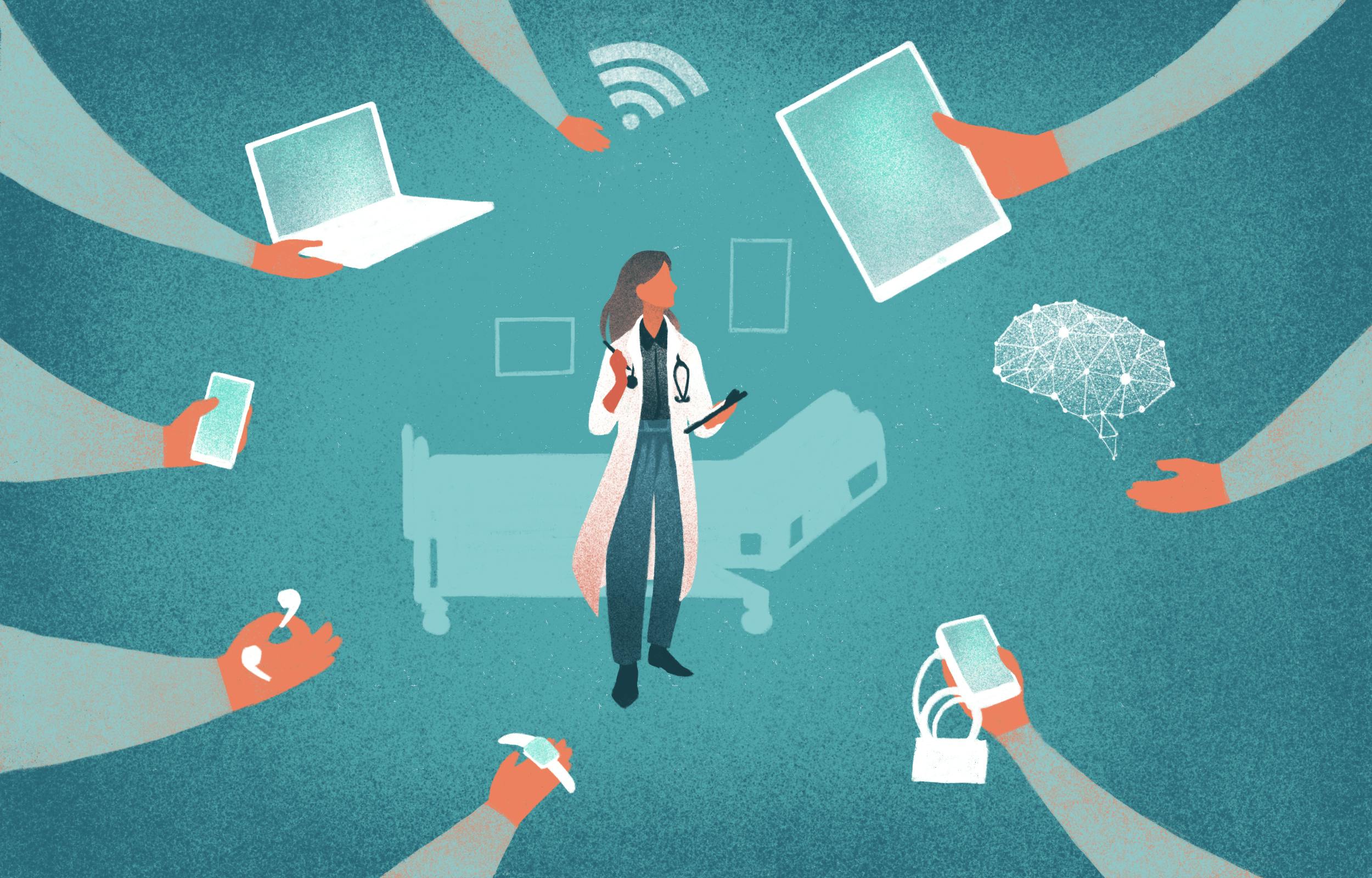There’s a gap between MedTech’s vision and the reality of provider tech literacy
From hailing robot-assisted surgery to pondering virtual nurse assistants, it feels like every MedTech industry commentator (us included!) has been predicting artificial intelligence is on the brink of transforming healthcare.

After all, it seems there’s no better time to take advantage of medical AI. The widespread adoption of EHRs has created access to massive amounts of data, and AI techniques have advanced dramatically over the past few years.
But an important concern is rearing its head: will providers actually be willing (and able) to use these tools?
In 2022, the NHS estimated that three out of four UK health providers know very little or nothing at all about AI. A study in South Korea found that 5.9% of surveyed providers reported “good familiarity” with AI, though over 80% reported that they believed AI would be useful in the medical field. A similar German survey of providers across specialties found a significant association between a personal rating of AI in medicine and the provider’s self-reported technical affinity level.
It’s clear that, around the world, provider knowledge of AI is lagging behind potential applications.
For the healthcare system to be able to benefit from many of the ways MedTech can improve care, like with medical AI, providers need to be able to use these tools.
So, how can we better prepare providers to adopt this technology in the many ways it’ll impact their work? The solution may lie in medical education itself.
Can medical schools be the key to improving healthcare provider tech literacy?
To a University of Michigan team of physicians and machine learning researchers, the answer is yes.
In a recent commentary published in Cell Reports Medicine, the team argued that medical schools are not doing enough to address the gap in provider knowledge and ability with respect to medical AI.
“We’re going to be at a point where we’re not going to be able to catch up and be able to call out the technology defects or flaws,” said Erkin Ötleş, a machine learning researcher and one of the article’s authors. “Without being armed with that set of foundational knowledge into how these things work, we’re going to be at a disadvantage.”
A 2021 review in the Journal of Medical Education and Curricular Development reported that there are almost no plans for how to incorporate Ai training into American medical school curricula.
The Cell Reports Medicine article proposes a “spiral curriculum” approach, where students are introduced to key aspects of medical AI at the start of their medical education. They then return to the topic repeatedly as they learn more advanced skills throughout their time in medical school.
However, realizing this approach to filling the gap between medical AI applications and provider tech literacy is much less simple.
Article co-author and former University of Michigan medical school dean Jim Wooliscroft emphasized that bureaucratic inertia is what has kept such necessary curricular changes from happening thus far.
Wooliscroft illustrated this disconnect in an interview with STAT, saying: “One of the real problems is our faculty aren’t even aware of it. Pre-Covid, I gave a lecture on machine learning, and people were going, ‘Why is this important?’ They didn’t even know that at the university hospital, there were eight programs at that time running continuously in the background, monitoring physiologic variables on their patients. Faculty do not have the expertise to teach it.”
The MedTech industry’s role in improving provider technology adoption
We agree that medical schools are an important part of the answer to provider tech literacy, but it can’t stop there.
For providers outside of their initial training years, workplace technology training and technology adoption through the help of trained professionals (i.e., medical science liaisons in medical device sales) are both important parts of filling the gap.
There have been resounding successes in the fight to improve provider technology adoption. In 2018, 7 out of 10 American hospitals were still mailing and faxing records. Today, the CDC reports almost 90% of office-based physicians in the U.S. use an EMR/EHR system.
That’s an incredible paradigm shift in just a few years. The U.S. government’s Meaningful Use incentive programs clearly played a big part.
However, financial incentives and relying on top-down training is not enough when it comes to the adoption of ubiquitous technology like AI tools. It also comes down to developing technological solutions with clinicians in the room.
When asked about what first steps need to be taken on improving provider knowledge and ability with AI, Ötleş said, “We need to have it be led by physicians.”
We wholeheartedly agree.
On this topic, we turn to the relevant insight Thom Rasche offers in our Pulse Check interview this week. Ultimately, as an industry, we need to understand that healthcare governed by trust. Patients’ trust in their providers is important, of course, but what also matters is providers’ trust in the tools they’re asked to use in their jobs.
In fact, when it comes to medical AI, many researchers have reported that true usefulness entirely depends on humans’ trust of the machines.
Trust is built through a blend of creating familiarity through exposure and intentional design. Both elements require providers to lead the way, as ambassadors for their profession. Through their leadership, MedTech can change healthcare from the inside out.